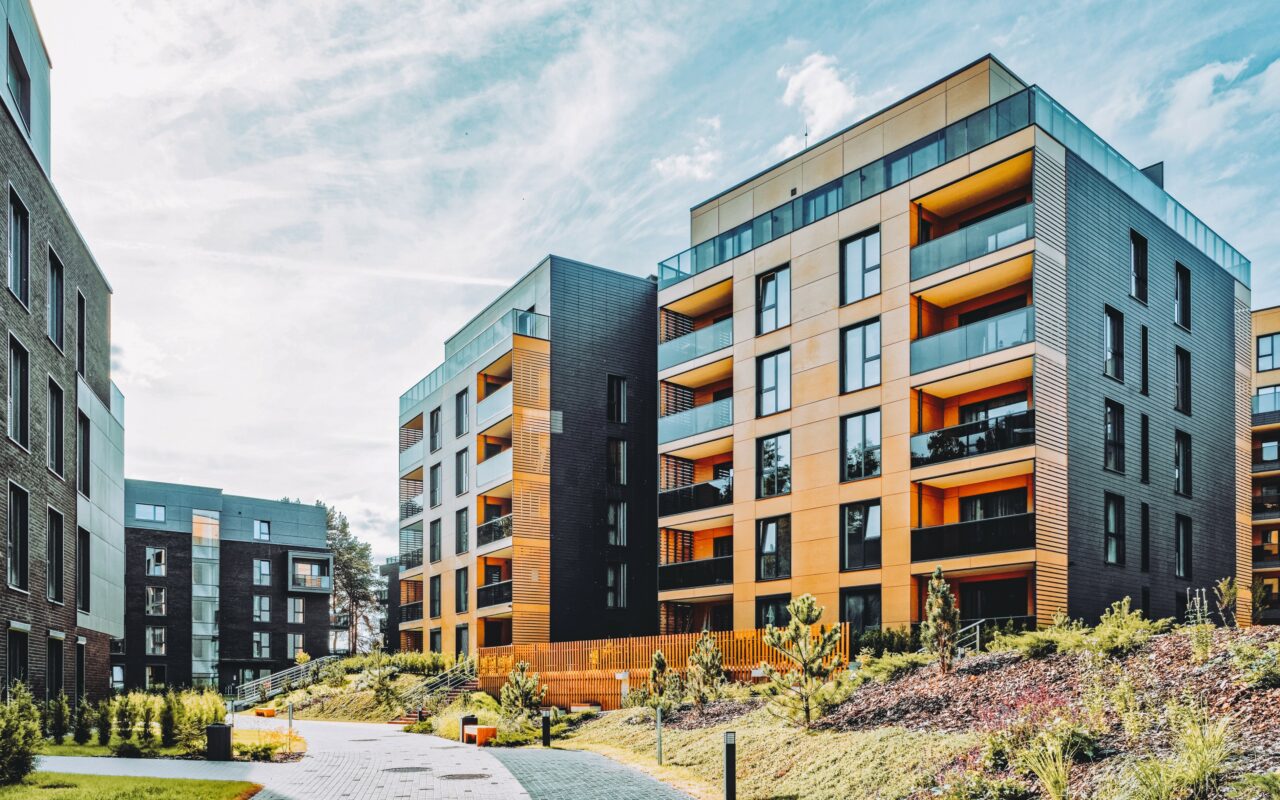As we go into 2024, it is inspiring to see how the construction industry is pushing forward despite the economic uncertainties. The UK Construction Industry Forecast 2024–2025 by Glenigan predicts that the UK construction industry can expect an increase of 8% in 2024, which is a hopeful sign that the industry will overcome the challenges it faces.
As we move into the new year, it’s exciting to witness the innovative approaches and cutting-edge technologies that the industry is embracing. It’s clear that the construction landscape is set for a transformative journey that will redefine the way we build. Here are some of the top trends our team at MyDek sees emerging in 2024.
Offsite Construction
Over the last few years, offsite construction, also known as modular construction, has really grown in popularity, and we expect this to continue in 2024. This construction method involves individual modules or components of the building being constructed off site before being transported to their final installed location. Owing to its efficiency and sustainability, we are likely to continue to see increased demand for modular construction methods.
The Frost & Sullivan report projects a 5.5% compound annual growth rate (CAGR) for the global modular construction market from 2022 to 2028. Although North America and Europe exhibit greater awareness and adoption of modular construction, the report highlights Asia-Pacific (APAC) and the rest of the world (RoW) as significant growth regions. However, in the UK, despite the increase in the demand for modular builds, there are some issues that need to be addressed in order for it to be more widely successful, these include: a need for increased manufacturing capacity, improved affordability, and balancing the drive for sustainable solutions whilst complying with safety regulations.
3D Printing
This technology simplifies creation of intricate designs with complex surfaces, reducing material usage, cutting labour costs and expediting construction timelines. The global 3D printing construction market is anticipated to experience significant growth, projected to reach $750.7 billion by 2031 from its 2021 base of $1.4 billion, with a remarkable CAGR of 87.3%, according to an Allied Market Research report. This projected growth is owing to increased global investments in building and infrastructure.
While this technology is not as widely used in the UK compared to the RoW, it is picking up, with one of the biggest 3D-printed housing developments in Europe underway in Accrington, Lancashire.
Construction Drones
These remotely operated aerial devices are capable of producing precise survey maps and real-time aerial images, to identify issues not easily observable at ground level, such as damage and cracks in tall structures and bridges. The global construction drone market is forecast to reach $11.9 billion by 2028, with a robust 15.5% CAGR from 2023 to 2028. This growth is being driven by the numerous advantages that drones offer, including enhanced reporting accuracy, improved safety and cost reduction, according to IMARC Services Pvt. Ltd. Thanks to these benefits, the use of drones in construction will continue to grow in 2024.
Building Information Modelling (BIM)
Design technology like BIM has gained widespread adoption among both designers and contractors. Using specialised software, it enables the creation of entire virtual buildings prior to the commencement of real-world construction projects. This approach is proving to be advantageous in comprehending what is effective and identifying areas for improvement before finalising designs. This ultimately aids companies in reducing on-site time and effectively managing costs. These benefits mean that such designing software will be widely accepted and used in the construction industry and this is why MyDek also supports our customers with downloadable BIM objects- compatible with Revit and IFC.
Zero Net Energy Buildings (NZEBs)
With sustainable construction being a top priority for the government and the industry, we see a rise in NZEBs as they align with the government’s 2025 targets for all new homes. Beyond energy efficiency, they contribute to cleaner air, job creation and a sustainable future.
In order to qualify as a NZEB, such buildings are designed to consume less energy, adopt renewable sources of energy, and are built using sustainable practices. Such NZEB’s could also follow existing frameworks like Passivhaus, BREEAM,LEED, WELL to qualify as a sustainable building or NZEB.
While these are five of the most prominent trends we see emerging in 2024, we can also expect to see a rise in the use of robotics, automation, drones and UAVs in construction. What other trends do you predict to see in 2024?
Need sustainable and compliant decking solutions for both modular and traditionally built balconies and terraces? Speak to our team to learn about our top decking ranges at MyDek.
Further reading

